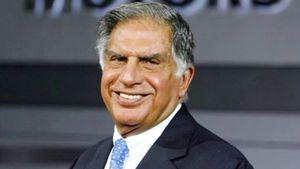Warner Bros. Entertainment is making headlines with its latest strategy to engage viewers: the studio has launched over 30 films for free viewing on its official YouTube channels. This move marks a significant shift from the company's previous tendency to limit access to its older catalog of films. Starting from January 1, 2025, Warner Bros. has made these films available to audiences, providing them with options to enjoy classic and cult-favorite films without the constraints of subscription or paywall.
The studio has created playlists featuring each of the films, which include commercial advertisements, though they are free to anyone with access to YouTube. This innovative digital strategy is not just about monetizing older content, but also about enhancing the visibility and discoverability of its films. The release was first reported by Gizmodo, highlighting the diversity of genres and era-spanning titles, including classics like Mutiny on the Bounty and popular modern films like The Adventures of Pluto Nash.
Among the films featured, the most-watched is Mr. Nice Guy, starring Jackie Chan, which has amassed over 16 million views since its release. The repertoire ranges widely, showcasing films such as The Mission, Oh, God!, and Waiting for Guffman, alongside some lesser-known flops like Dungeons & Dragons and Hot to Trot.
This strategic decision by Warner Bros. deviates from the industry's recent trend of minimizing accessibility to older movies. With previous attempts at monetizing through platforms like FilmStruck ending swiftly, this pivot to YouTube reflects the studio's desire to revitalize interest around its vast catalogue. Historically, the access barrier posed by subscription models has often alienated casual viewers, and by offering these films devoid of such barriers, Warner Bros. seeks to capture broader attention.
Over the years, Warner Bros. has undergone significant transformations, particularly under the direction of CEO David Zaslav. Recent decisions to cancel projects like Batgirl revealed the company’s aim to streamline operations and focus on profitability. Yet, this wave of free movie releases can be viewed as somewhat of a peace offering to audiences unhappy with the abrupt thinning of content. “It’s one less barrier to accessing some (admittedly obscure) content without a subscription or paywall,” noted Gizmodo, underlining the significance of this development.
The selection of films is eclectic, with choices ranging from impactful movies like Michael Collins to comedic gems like Chaos Theory. Notably, the free offerings stand apart from Warner Bros. streaming service, Max, where these titles aren’t currently available. This strategic divergence highlights the studio's intention to leverage different platforms to maximize viewership and ad revenue.
Warner Bros.' recent initiative is not just about immediate financial gain. The company aims to connect with newer generations of viewers who may have previously overlooked these titles. With classic actors like Marlon Brando, George Burns, and Robert De Niro featured, the array of films offers something for everyone. It encourages viewership of both nostalgic content and those discovering these gems for the first time.
One interesting facet of the launch is Warner Bros.' commitment to the YouTube format itself. By utilizing social media platforms where audiences already congregate, they're meeting viewers where they are — just as they have with licensing films to ad-supported streaming services like Roku and Tubi. The company has recognized the shifting media consumption patterns and has responded appropriately.
The future of this initiative remains to be seen. Will this free-for-all approach to older content lead to renewed interest and viewership metrics? The potential for these movies to resurface as cultural discussions online is enormous. By inviting viewers to enjoy its offerings, Warner Bros. might find itself not only increasing ad revenue but also fostering loyalty among moviegoers.
The early reception of this initiative indicates promising results. With numerous titles being viewed millions of times already, the film industry is watching closely as Warner Bros. maneuvers through this experimental phase. Cinema enthusiasts and casual viewers alike now have greater access to the rich library of Warner Bros.' historical films, reminding us all of the power of cinema and storytelling.
For avid fans and casual viewers, the opportunity to explore these free movies could reignite love for film and, perhaps, inspire new artistic endeavors within the production company. Warner Bros. is not merely focusing on archival preservation but actively promoting its creative legacy through strategic outreach to potential viewers.
This initiative can open new avenues for Warner Bros. to experiment with future releases and audience engagement strategies. The next move for the studio may determine how legacy film companies adapt to changing consumer strategies — balancing nostalgia with modern accessibility.



